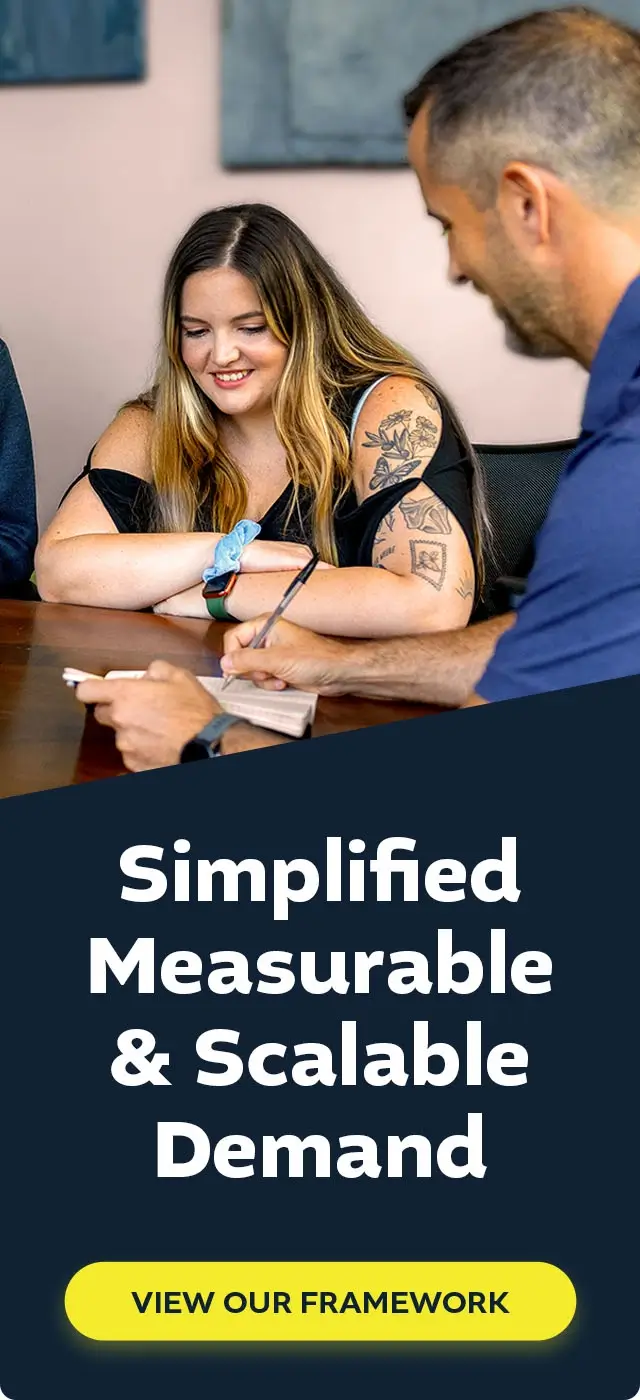Don’t worry; this isn’t another “The Difference Brand Awareness and Brand Recognition” article…
It’s a chance for you to commiserate with me on a client-facing issue. One that occurs regularly due to a sense of brand awareness (or lack thereof). More so, the need for intentional marketing to align your objectives with your reality.
There’s a way to win with a limited budget, but your client must know what to expect regarding timelines and objectives. As marketers know, the (fun?) challenge of meeting KPIs with a lean budget is ordinary reality. The savvy marketer understands how to level the playing field by clearly setting expectations.
But this is difficult to accomplish, especially working with a client whose brand is essentially non-existent to the target audience. Worse, if the brand is non-existent, there’s also potential for lack of clarity around the solution.
Marketing success is difficult with low brand awareness. A revolutionary concept, I know, but hear me out. Sometimes a sobering analysis of “do people even know you or your product” is exactly what’s needed to help a client make the right decision.
Only 30% of brands use customer data to create more relevant experiences.
FORBES COMMUNICATIONS COUNCIL
here’s a way to win with a limited budget, but your client must know what to expect regarding timelines and objectives. As marketers know, the (fun?) challenge of meeting KPIs with a lean budget is ordinary reality. The savvy marketer understands how to level the playing field by clearly setting expectations.
But this is difficult to accomplish, especially working with a client whose brand is essentially non-existent to the target audience. Worse, if the brand is non-existent, there’s also potential for lack of clarity around the solution.
Marketing success is difficult with low brand awareness. A revolutionary concept, I know, but hear me out. Sometimes a sobering analysis of “do people even know you or your product” is exactly what’s needed to help a client make the right decision.
How can a client expect ad spend efficiency when no one knows their brand??
I intend to help you more confidently communicate the sobering reality of your client’s non-existent brand awareness… and what to do about it.
I’ve Never Heard of (Insert Brand Name)
A mere 30% of brands use customer data to create more relevant experiences. So, we’ve established that most businesses don’t know their customers all that well.
So ask yourself. Are your client’s prospects aware of their brand?
Most importantly, why does it matter?
Given the common perception that consumers are more likely to purchase based on emotion rather than logic, it’s no stretch to say that an aesthetically pleasing brand design goes a long way in securing consumer confidence. Add in familiarity and brand awareness, and you’ve hooked them.
Suppose you think that’s a simplistic narrative useful only to those who have money to burn on brand advertising or are already a recognizable entity. In that case, you’re right (for the most part).
Brand campaigns, as most marketers refer to them, are useful in capturing those already seeking you out. Their other primary function? Buying up ad space to prevent competitors from poaching your clicks and conversions.
Your Brand is Secondary to Your Solution
Read that title again. “Your brand is SECONDARY to your solution.” Okay, I’ll stop screaming now.
However, my enthusiasm is well-warranted, as I sometimes see prospective clients flail at the hands of a self-centered marketing approach. This concept of “if they know us, they’ll buy our product/service” is flawed, simple as that.
Admittedly, building brand awareness can improve your market share. Still, if the brand is nonexistent, it’s probably not the best starting point or use of your budget. Instead, ask yourself, in simple terms, how well your prospective audience knows the solution they’re looking for. Or are they experiencing a problem and beginning to look for a solution that’s not well-defined? Think about it in these terms: a B2B technology software company may sell a solution for labor efficiency, but does their target audience know how to look for it? Do they even know what to call it?
You may already work in an industry with a well-defined and well-recognized portfolio of solutions that meet your target audience’s wants and needs. But in a fast-changing world, it’s essential to do the leg work of customer research to piece together what terms they’re speaking in.
As part of your research, try to pinpoint the keywords your customers are searching for the most when they interact with a solution similar to yours.
Education is the Key to a Better Future
It may not be the sexiest cliche, but its accuracy is uncanny.
Instead of focusing on creating eyeballs on your brand, create awareness around the solution (and your ‘special sauce’ differentiator). Consider this: 84% of B2B marketers list brand awareness as their business’ key content marketing goal.
84% of B2B marketers list brand awareness as their business’ key content marketing goal.
INVESP MARKETING CONSULTANTS
Why? I must as the question as it’s worth playing devil’s advocate to such a typical measuring stick for success.
Do your prospects have a need? Why muddy the water by placing the focus on brand messaging? Instead, reel them in first with your solution. Then, talk directly to their pain point.
The Recipe For Creating Demand
There’s no way around it. Suppose your client’s brand or solution is unknown. In that case, you’ll need to get comfortable with suggesting a fair percentage of the digital ad budget be allocated to traffic, reach, or any awareness-focused objective. No “quick win” ad marketing in 2022/2023 is sustainable. That is unless you’re happy capturing the <1% of people looking for your product.
Without further ado, I’ll leave you with this digital ad recipe for brands with low awareness:
On paid social channels: Your first contact point should speak to the customer’s pain point, introduce your solution, and don’t make your brand a conversation point. THEN remarket those same individuals with ad messaging that introduces your brand as the top choice for that particular solution. Here’s where your core differentiation comes in… hit the user with one or two hardest-hitting reasons to choose your solution. Does your pricing beat the competition? Is there a feature that makes your product a “must-have? Again, use customer research data to inform your decision here.
On paid search channels: Let your social channels command most of the budget to educate your users. Finish the deal by using your paid search budget to target high-intent conversion-focused keywords. Stay efficient, and use this channel to close the deal.


